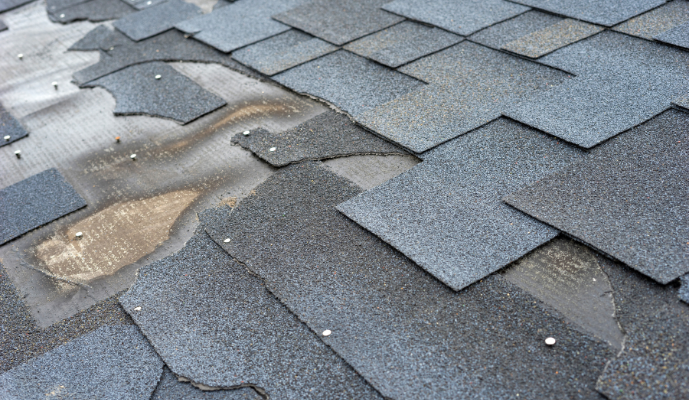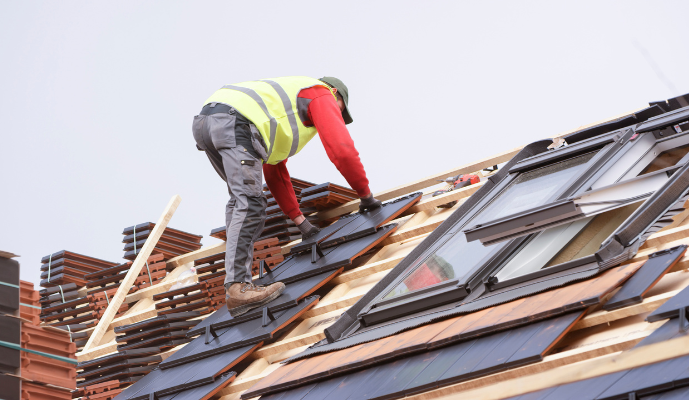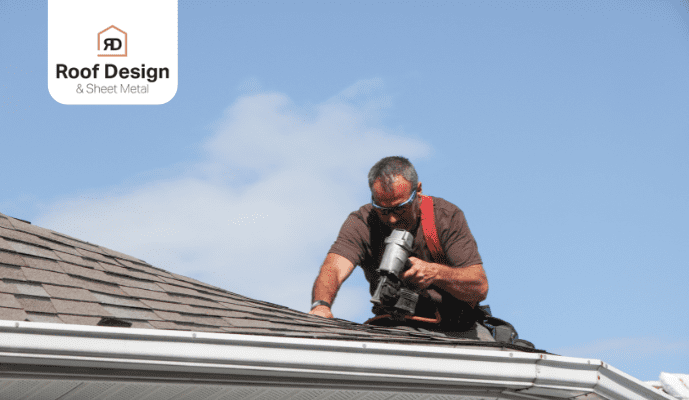When it comes to maintaining your home, ensuring that your roof is in top condition is paramount. A well-repaired roof not only protects the structure from further damage but also enhances the overall aesthetic and value of your home. This guide will delve into various roof repair methods that guarantee durability and longevity.
Understanding Roof Damage and Its Causes
Before diving into repair methods, it’s crucial to understand the common causes of roof damage. Roofs endure harsh weather conditions, including rain, wind, snow, and extreme sunlight, all of which can cause significant wear and tear. Over time, these elements can lead to roof leaks, cracked or missing roof shingles throughout, and general deterioration. Identifying the root cause of roof damage is the first step toward effective repair.
Common Causes of Roof Damage
1. Weather Extremes: Frequent exposure to severe weather can weaken roofing materials, leading to roof leaks and other issues.
2. Poor Installation: Substandard installation by inexperienced or unqualified contractors can compromise the roofing system’s integrity.
3. Lack of Maintenance: Neglecting regular maintenance can exacerbate minor roof repairs into major problems.
Effective Roof Repair Methods
Different types of roof repair methods are suited to various types of roofing materials and damage severity. Here, we’ll explore some of the most effective methods that ensure long-lasting results.
Patching Small Roof Leaks
Patching can be highly effective for minor roof repairs, especially those involving small leaks. This method involves identifying the source of the leak and applying a sealant or patch material.
1. Identify the Leak: Trace the water stain back to its source. This might be a small hole or a crack in the roofing material.
2. Clean the Area: Remove any debris or old patching material from the area around the leak.
3. Apply Sealant or Patch: Use a high-quality roof sealant or patching kit to cover the leak. Ensure the patch extends beyond the damaged area for a secure seal.

Replacing Damaged Shingles
Asphalt roofing shingles are popular with homeowners due to their durability and affordability. However, they can become damaged over time. Replacing individual shingles is a straightforward and effective method to maintain the integrity of your roof.
1. Remove Damaged Shingles: Carefully lift the edges of surrounding shingles and remove nails from the damaged shingle.
2. Install New Shingle: Slide the new shingle into place and secure it with nails. Ensure the new shingle is properly aligned with the existing ones.
3. Seal the Edges: Apply roofing cement to the edges of the new shingle to seal it in place and prevent future leaks.
Fixing Leaking Flat Roofs
Leaking flat roof vents and roofs require specific repair techniques due to their unique design. Flat roofs are prone to pooling water, which can lead to leaks and extensive damage.
1. Clear Debris: Remove any debris from the roof surface to prevent water pooling and identify the source of the leak.
2. Apply Roof Sealant: Use a sealant specifically designed for flat roofs to cover the leak. For larger leaks, you might need a patching kit.
3. Reinforce Weak Areas: Consider reinforcing other weak areas of the roof with additional layers of sealant or patch material.
Roof Repair vs. Roof Replacement
Deciding between roof repair and roof replacement depends on the extent of the water damage and the age of the roof. Here are some guidelines to help you decide.
When to Opt for Roof Repair
-
Minor Damage: If the damage is limited to a few shingles or a small area, roof repair is usually sufficient.
-
Budget Constraints: Roof repairs are typically less expensive than replacements, making them a viable option if budget is a concern.
-
Roof’s Age: If your roof is relatively new and the damage is minor, repairs can extend its lifespan without the need for replacement.
When to Consider Roof Replacement
-
Extensive Damage: If the roof has extensive damage or multiple leaks, replacement might be more cost-effective in the long run.
-
Old Roof: If the roof is nearing the end of its expected lifespan, replacement ensures better protection and can prevent future issues.
-
Frequent Repairs: If you find yourself constantly repairing the roof, it might be time to consider a full replacement.
The Importance of Quality Roofing Materials
The longevity of any roof repair heavily depends on the quality of the roofer materials used. High-quality roofing materials not only ensure durability but also enhance the overall performance of your roofing system.
Choosing the Right Roofing Materials
1. Durability: Select materials known for their longevity and resistance to weather conditions.
2. Compatibility: Ensure the materials are compatible with your existing roofing system.
3. Energy Efficiency: Opt for materials that offer good insulation and energy efficiency to reduce heating and cooling costs.
Working with a Local Roofing Contractor
Hiring a local roofing contractor ensures that the repair work is done correctly and efficiently. Local roofing contractors are familiar with the common roofing issues in your area and can provide tailored solutions.
Benefits of Hiring a Local Roofing Contractor
-
Expertise: Local contractors have in-depth knowledge of the best practices for roof repair in your region.
-
Accessibility: They are easily accessible for inspections, maintenance, and emergency repairs.
-
Reputation: You can easily verify their reputation through local references and reviews.
Roof Repair Cost Considerations
Understanding the cost of roof repairs is essential for budgeting and planning emergency roofs,. Several factors influence the overall cost of roof repair.
Factors Affecting Roof Repair Cost
1. Type of Damage: The nature and extent of the damage significantly affects the repair cost. Minor repairs are generally less expensive than major ones.
2. Roofing Materials: The cost of materials varies widely. High-quality materials tend to be more expensive but offer better longevity.
3. Labor Costs: Labor costs can vary based on the contractor’s expertise and the complexity of the repair job.
4. Location: Repair costs can also vary depending on your geographic location and the local cost of living.

Preventive Measures for Long-Lasting Roofs
Preventive maintenance is key to ensuring the longevity of your roof. Regular inspections and timely minor roof repairs can prevent major issues down the line.
Regular Roof Inspections
Conducting regular roof inspections helps identify potential problems early. Look for signs of wear and tear, and structural dam

age such as cracked or missing shingles, and address them promptly.
Timely Repairs
Addressing minor issues like roof leaks and shingle damage on residential roofs as soon as they are noticed can prevent them from escalating into major problems.
Gutter Maintenance
Keeping your gutters clean and free of debris ensures proper water drainage, preventing water from pooling on your roof and causing damage.
Conclusion
Ensuring long-lasting roof repairs involves a combination of using high-quality materials, employing effective repair methods, and performing regular maintenance. Whether you’re dealing with minor roof repairs or considering a roof replacement, understanding the best practices common roof repairs and working with a reputable local roofing contractor is crucial.
For residents in Naples, Roof Design Naples offers comprehensive roofing services, including inspections, repairs, and full roof replacements only. Our experienced team is dedicated to providing high-quality workmanship and reliable solutions for all your roofing needs.

